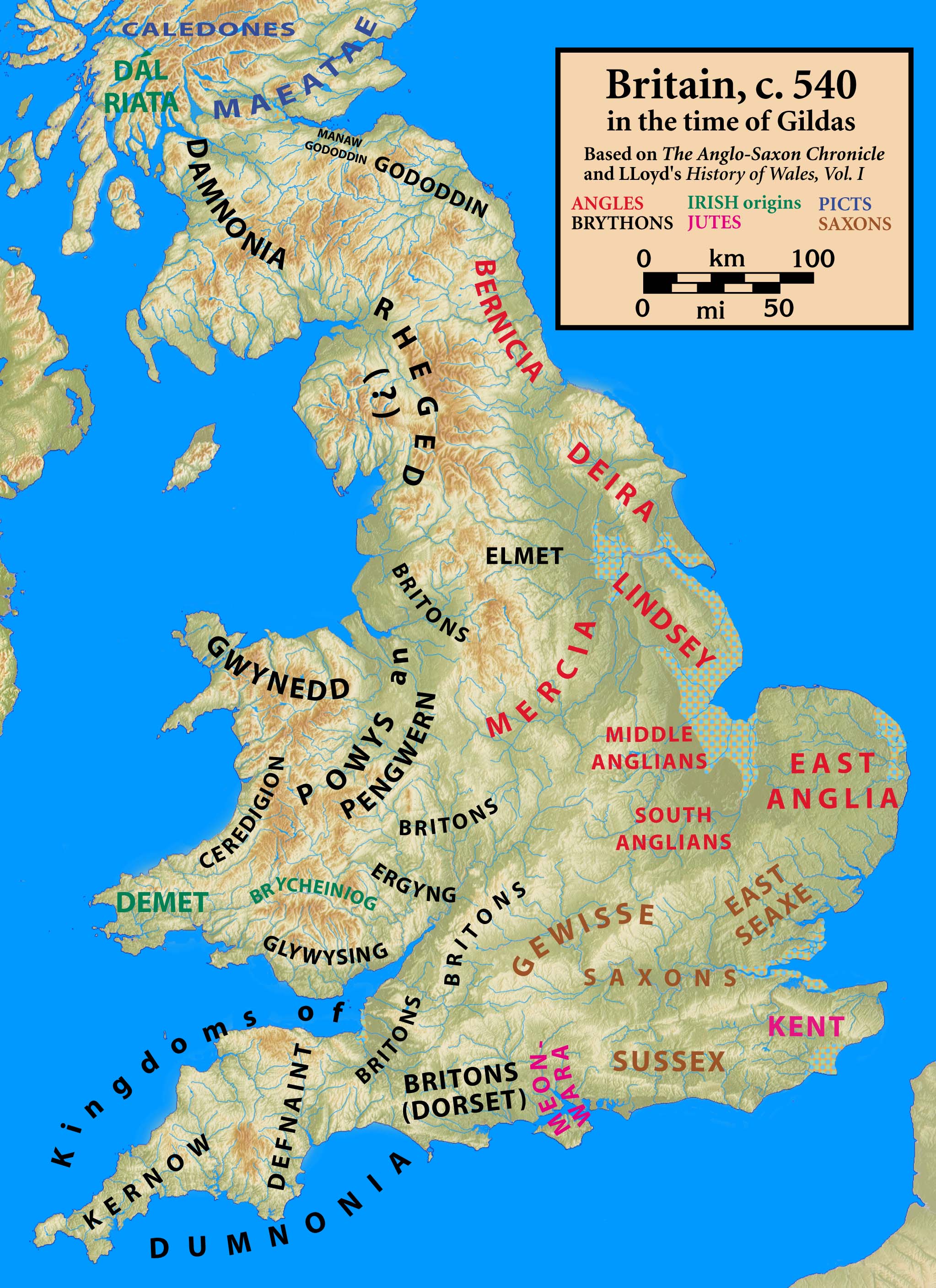|
Maelgwn Gwynedd
Maelgwn Gwynedd ( la, Maglocunus; died c. 547Based on Phillimore's (1888) reconstruction of the dating of the ''Annales Cambriae'' (A Text).) was king of Gwynedd during the early 6th century. Surviving records suggest he held a pre-eminent position among the Brythonic kings in Wales and their allies in the " Old North" along the Scottish coast. Maelgwn was a generous supporter of Christianity, funding the foundation of churches throughout Wales and even far beyond the bounds of his own kingdom. Nonetheless, his principal legacy today is the scathing account of his behavior recorded in ''De Excidio et Conquestu Britanniae'' by Gildas, who considered Maelgwn a usurper and reprobate. The son of Cadwallon Lawhir and great-grandson of Cunedda, Maelgwn was buried on '' Ynys Seiriol'' (now known as Puffin Island in English), off the eastern tip of Anglesey, having died of the "yellow plague"; quite probably the arrival of Justinian's Plague in Britain. Name ''Maelgwn'' (IPA: /m╔æ╦É╔©lg╩ ... [...More Info...] [...Related Items...] OR: [Wikipedia] [Google] [Baidu] |
Annales Cambriae
The (Latin for ''Annals of Wales'') is the title given to a complex of Latin chronicles compiled or derived from diverse sources at St David's in Dyfed, Wales. The earliest is a 12th-century presumed copy of a mid-10th-century original; later editions were compiled in the 13th century. Despite the name, the record not only events in Wales, but also events in Ireland, Cornwall, England, Scotland and sometimes further afield, though the focus of the events recorded especially in the later two-thirds of the text is Wales. Sources The principal versions of appear in four manuscripts: * A: London, British Library, Harley MS 3859, folios 190rŌĆō193r. * B: London (Kew), National Archives, MS. E.164/1 (K.R. Misc. Books, Series I) pp. 2ŌĆō26 * C: London, British Library, MS. Cotton Domitian A.i, folios 138rŌĆō155r * D: Exeter, Cathedral Library, MS. 3514, pp. 523ŌĆō28, the . * E: ''ibid.'', pp. 507ŌĆō19, the . *A is written in a hand of about 1100ŌĆō1130 AD, and inser ... [...More Info...] [...Related Items...] OR: [Wikipedia] [Google] [Baidu] |
Compound (linguistics)
In linguistics, a compound is a lexeme (less precisely, a word or sign) that consists of more than one stem. Compounding, composition or nominal composition is the process of word formation that creates compound lexemes. Compounding occurs when two or more words or signs are joined to make a longer word or sign. A compound that uses a space rather than a hyphen or concatenation is called an open compound or a spaced compound; the alternative is a closed compound. The meaning of the compound may be similar to or different from the meaning of its components in isolation. The component stems of a compound may be of the same part of speechŌĆöas in the case of the English word ''footpath'', composed of the two nouns ''foot'' and ''path''ŌĆöor they may belong to different parts of speech, as in the case of the English word ''blackbird'', composed of the adjective ''black'' and the noun ''bird''. With very few exceptions, English compound words are stressed on their first compo ... [...More Info...] [...Related Items...] OR: [Wikipedia] [Google] [Baidu] |
Isle Of Anglesey
Anglesey (; cy, (Ynys) M├┤n ) is an island off the north-west coast of Wales. It forms a principal area known as the Isle of Anglesey, that includes Holy Island across the narrow Cymyran Strait and some islets and skerries. Anglesey island, at , is the largest in Wales, the seventh largest in Britain, largest in the Irish Sea and second most populous there after the Isle of Man. Isle of Anglesey County Council administers , with a 2011 census population of 69,751, including 13,659 on Holy Island. The Menai Strait to the mainland is spanned by the Menai Suspension Bridge, designed by Thomas Telford in 1826, and the Britannia Bridge, built in 1850 and replaced in 1980. The largest town is Holyhead on Holy Island, whose ferry service with Ireland handles over two million passengers a year. The next largest is Llangefni, the county council seat. From 1974 to 1996 Anglesey was part of Gwynedd. Most full-time residents are habitual Welsh speakers. The Welsh name Ynys M├ ... [...More Info...] [...Related Items...] OR: [Wikipedia] [Google] [Baidu] |

